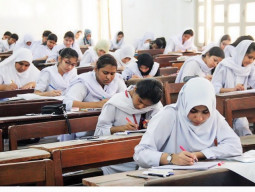
Life in the high mountains is suffused with a timeless luminosity every autumn. The spectral light softens and slows all movement: be this the drifting flight of a Siberian Steppe Eagle as it lazily floats on somnolent thermals, the hushed shuffle of village women returning from forested slopes bearing massive bundles of animal fodder and fuel on their heads or the half-hearted perambulations of weather-beaten old men trawling tiny bazaars for tea and gossip. Days are a dream time of unhurried preparedness for when, suddenly and in the dark of the night, collective consciousness is overpowered with a sharp clarity induced by the subzero temperatures of winter.
For now though, slow motion is the order of the day. With the tourist season over, the plastic chairs of roadside eateries lie empty and forlorn. Local people go about the ageless business of reclaiming both their lands and their lives which, unfortunately, are no longer as in sync with the environment as they once were.
The detritus of crass commercialism litters the still-magnificent landscape. Newly constructed and under-construction holiday homes for the ‘elite’ and seasonal visitors mar the mountains who, in their rush to nature, are perhaps unknowingly destroying the very environmental beauty they profess to seek.
It is difficult to ascertain exactly where the blame for this ruination of grandeur lies. Having turned their backs on subsistence agriculture, indigenous residents have long become accustomed to living off the fat of the tourist trade, given the absence of other forms of employment. Meanwhile, the tourist trade has increased in recent years as foreign travel, with its post-9/11 difficulties, is now too expensive for many of those who used to indulge in this luxury. With Swat and some other traditional tourist havens still viewed as ‘no go’ areas, the Galiyat region, so accessible from the plains, serves as a scenic magnet for those in search of a break. All of this is perfectly understandable, of course. Local people reap the financial rewards, tourists have a whale of a time but the price, for both sectors, is coming home to roost.
Hand in hand with the disease of new buildings and ramshackle extensions, is the impact of larger than life advertising. Slogans can be seen painted directly on buildings and rocks or splashed across intrusive billboards hoisted high in the air, marring the mountainside at regular intervals. Many of these are defaced with offensive graffiti and, here and there, what look distinctly like bullet holes. Then, as is only to be expected from a population severely lacking civic sense, there is the garbage. Largely non-biodegradable, it is building up season after season, poisoning the ground and exuding toxic chemicals into the supposedly ‘fresh’ air that everyone living or visiting the region expects to breathe.
Not immediately visible on the switchback roads — some of them currently threatening to slide into oblivion, thanks to inferior construction — this garbage, which emanates from local households, hotels, restaurants, shops, picnickers and is thoughtlessly tossed out from bus and car windows, forms huge carpets of disease-laden filth and tumbles, in cascades of multi-coloured plastic, down precipitous slopes. Here, it is rummaged through, picked over and further dispersed by wildlife and wind. The result is sickening yet neither the general public nor the local authorities seem to care.
There is another rising menace — although visitors certainly do not view it as such and neither do the few local ‘entrepreneurs’ who profit from it. Not many years ago, the population of Rhesus macaque monkeys in the forests was fairly small, since the natural environment is only capable of adequately supporting a certain number. These mountain dwelling monkeys, intelligent as they are, tended to steer clear of direct interaction with humans. They did, however, take full advantage of places where anything even remotely edible may have been dumped. Over the years, the monkeys have abandoned their forested territory in favour of easy handouts and may even have totally forgotten how to forage for their natural dietary requirements. Troops of monkeys now hang around any place, predominantly eateries and picnic spots. And people throw, even directly hand out, food and fizzy drinks to monkeys without realising that they have a very nasty bite and can be particularly vicious when protecting their young. At the height of the tourist season, the monkeys are thus provided with all the junk and other ‘purchased’ food they can eat. Locals obviously understand the monetary lure of monkeys; some tiny eateries encourage them to hang around so that tourists will stop, buy their offerings and feed it to the lurking, ever hungry hordes. While this may sound perfectly harmless, it has set a dangerous trend. When tourists thin out and then disappear as the season wanes, the monkeys, deprived of the sustenance they have come to take for granted, first stalk and then pounce on every potential food source on two legs that they happen to see. If their selected target happens to be carrying a bag or is wearing a flowing chador then…watch out!
Yet another aspect to the ‘monkey factor’ is that, since these monkeys have migrated to human territory, the animals which, in the manner of all natural food chains, traditionally prey on them are faced with an ever-diminishing menu. Leopards, wild dogs, foxes, jackals, finding it harder to fill their stomachs, are having to search for alternative nourishment in order to survive and so are, quite understandably, turning more and more towards raiding human habitations where livestock and chickens can be found. This, in turn, increasingly deters indigenous peoples from investing in replacement animals and poultry. What is the point of spending good money on something which may quickly end up as food for hungry wildlife?
In this way, and many others, the entire environmental, ecological and sociological balance of the Galiyat region is being destroyed. If allowed to continue unchecked, it will not be too many years down the line that people discover that there isn’t a single reason left for them to visit the ruined remains of what was once as pristine a place as it is possible to get in an easily accessible region of a vastly overpopulated country.
Published in The Express Tribune, Sunday Magazine, November 13th, 2011.























































COMMENTS
Comments are moderated and generally will be posted if they are on-topic and not abusive.
For more information, please see our Comments FAQ